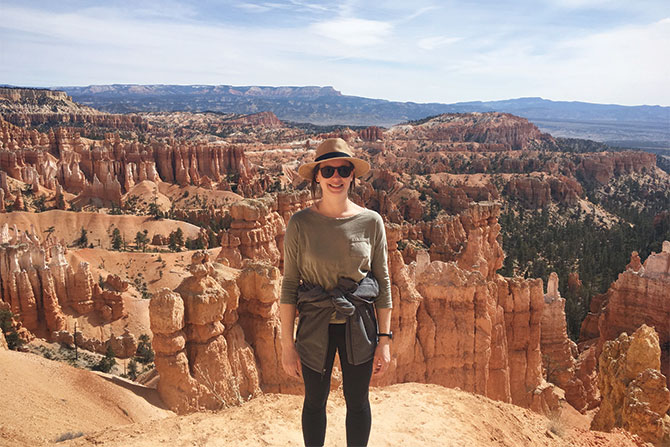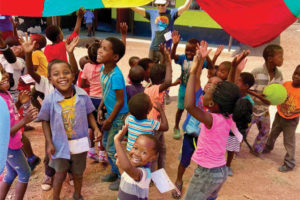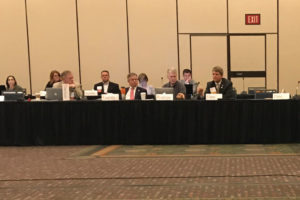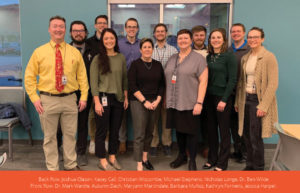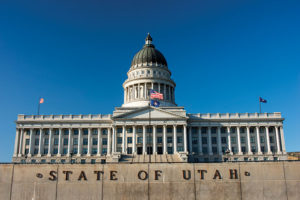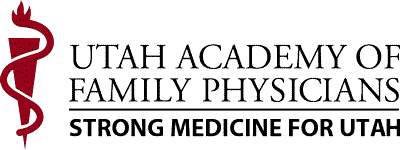By UAFP
I was born and raised in Portland, Oregon. As shown in the show Portlandia, “the dream of the 90s” was absolutely alive during my childhood. It was an eclectic community with a strong sense of local culture, and I spent much of my childhood outdoors learning how to care for the environment and other people.
My mother is a foot care nurse, my father is an architect, and my sister is an airline pilot. They are all still living in Oregon. My sister and I spent our formative years enthralled in horse 4-H, riding English style, and studying horse behavior and anatomy, all of which was an early introduction to communication and leadership skills. In adolescence, my mother and I moved in with my then-95-year-old grandfather. He was one of the founders of modern psychiatry and community mental health. Despite his aging body, he continued to fuel his curiosity and fervor for life through his final years. He would read The New York Times from cover to cover and ride his stationary bicycle for 5 miles each day. He often assigned me to look up the meaning of obscure words or exotic subject matters, and then we would huddle over the dinner table, reviewing my findings. Although aged and in need of assisted care, the caregiving role between us was fluid and reciprocal. Fast forward to now, I find myself reflecting on that time in my life when I am working with families of my older patients, recalling the strengths and challenges of my own intergenerational relationship. There is no doubt that this experience informed my interest in geriatrics.
My list of hobbies is endless, and like many people who have transplanted into Utah, most of them are outdoor. I enjoy trail running, bike commuting, rock climbing, skiing and now backcountry skiing. Since starting residency, I do most of these activities at a “maintenance level,” not making huge strides in my capabilities, but getting outside just enough to keep up my skills and love for the sport. My indoor hobbies have really blossomed since the coronavirus pandemic. These range from listening to vinyl from my parent’s generation, napping with my black cat Ella, finding new podcasts, and in the last month, my boyfriend and I have been cooking our way through a Spanish tapas cookbook, Toro Bravo.
I received my undergraduate degree in biology from the University of Oregon. I stayed an extra year to complete an honors thesis in evolutionary biology where my project looked at genes involved in craniofacial development in a long-snouted fish, the pipefish. After graduation, I joined a research group at Oregon Health & Science University (OHSU) that was studying the role of exogenous melatonin to treat circadian rhythm disruptions in blind adults and children. Both this and my undergraduate research experience sparked my love for science, but they also fueled my desire to step out from behind the lab bench and into a role that would allow for more human interaction. This desire led me to a position at Old Town Clinic, a medical clinic that serves homeless adults in downtown Portland. It didn’t take long at this job to realize just how passionate I was about patient care, particularly for underserved communities, and I applied to medical school shortly after that. During college summers, I had always worked food service jobs, and after college, I picked up hours at a local Italian restaurant. I bring this up because there were so many nonmedical experiences that informed the physician I am today. Last month I was on my rotation in the emergency room, and I found myself comparing the skills of customer service and multitasking in the ER to the fast-paced milieu of the restaurant industry.
My path to medicine was winding, but I am thankful for the time and experiences that happened in between undergraduate and medical school. It allowed me to truly choose medicine and to see that decision as a privilege. I always encourage those considering medical school to take time off after undergraduate; they will know themselves better and relate to their patients more genuinely.
Choosing Family Medicine
Like many who go into family medicine, I liked most of my rotations in medical school. But, slowly, I narrowed my interests to nonsurgical, outpatient specialties. A mentor in medical school told me that picking a specialty comes down to three things: the people, the work and the reading. He said that I would discover my specialty by finding co-workers whom I wholeheartedly respect, liking what I do 90% of the time, and identifying which set of practice guidelines I would readily curl up at night with to read. I happily checked all three when I picked primary care via family medicine.
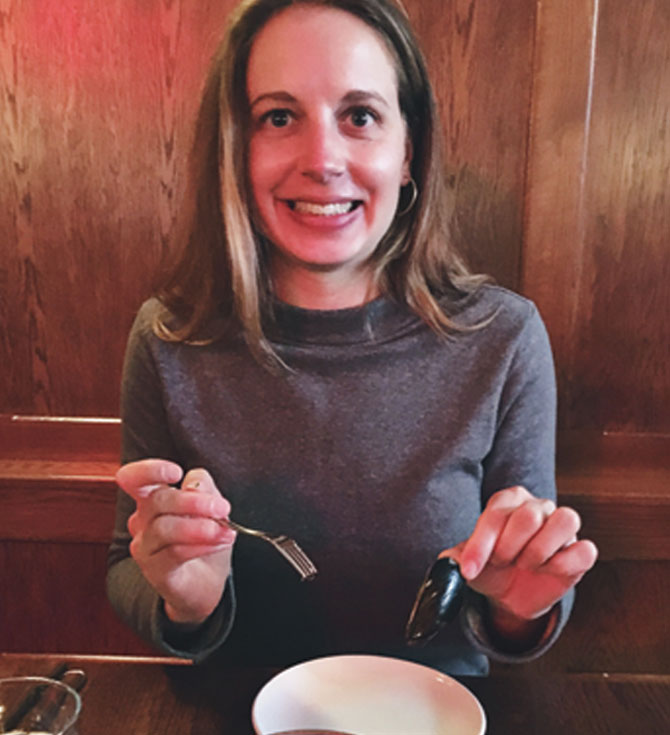
Residency and Living in Utah
I never imagined that Utah would now be my home, but I could not be happier to be here. I wanted an academic program and to stay in the Western states, so I found myself interviewing at the University of Utah. I fell in love with Utah on my interview day. It was a bluebird day after the first snow of the season. The mountains were shimmering, and the air was fresh. The faculty members I met on my interview day were infectious; they were clearly passionate about resident education and delivering effective primary care. I really connected with the fact that the leadership team was mostly women. It wasn’t until that interview that I realized how much I wanted a program with gender diversity in its leadership. Now I look back and have no doubt that the women mentors in my program have been a huge part of my success in residency. They’ve inspired me and shown me what is possible as a young female physician.
Although I came here for the program, I think the location is really important, too. When medical students ask my advice about picking a residency, I always say the following: you will work six days a week for much of your training, so pick a place where on that one day off, you can do what rejuvenates you. For me, that is being in proximity to nature.
There have been so many memories from residency, but when I think about what has brought me the most joy, it is from experiencing what it feels like to have a continuity panel of patients. Finally, by the end of the intern year, there were a handful of patients that I knew really well. And now, I don’t have a clinic session that isn’t full of returning patients. The patient-provider relationship creates a new level of accountability and motivation for quality patient care. This kind of relationship was the reason I went into primary care, and it’s so nice to finally experience it.
One of the more challenging aspects of family medicine residency is the constant setting changes, from inpatient to outpatient, from pediatrics to labor and delivery to intensive care. This change can be wearing, but it lends to one of the most treasured strengths of family medicine residents, which is adaptability and comfort with uncertainty. Everything in life is about attitude, and residency is no different. Last year we tragically lost one of our co-residents, and when I find myself struggling with the pace or expectations of residency, I think of how lucky I am to be here, and I try to honor her by living my best life and doing my best job.
It was refreshing to see how robust the LGBTQ community is in Salt Lake City. Working with this community in the clinic, particularly through transgender care and HIV pre-exposure prophylaxis (PrEP), has been one of the most rewarding parts of residency. There wasn’t much training in medical school about transgender health or sexual health outside of what has traditionally been termed “women’s health.” The University of Utah clinics here have been a leader in delivering gender-affirming primary care, and I could not be more proud to be a part of this. As I move into geriatrics, I am really interested in staying connected with and caring for the aging LGBTQ community.
Geriatric Fellowship
During my residency, I realized how passionate I became when working with older patients. It was almost as simple as which patient visits I looked forward to the most. There was no particular moment in which I identified my passion for caring for older adults. Instead, I gradually gravitated toward this population. With my older patients, I found myself poring over their illness histories, looking for the disease culprits, and wondering how their comorbidities may have contributed to their aging organs or vice versa. The medical complexity was motivating. The awareness of and proximity to death for older people lends itself to shared decision making and discussions of goals of care. This awareness has allowed me to be more present for my older patients and provide the type of human-paced “slow medicine” I wish to practice.
I think there is often an illusion that simply because we (family or internal medicine residents) care for older patients that we are being thoughtful about, or are getting the teaching for how we might care differently for these patients. Older adults face unique medical, psychiatric and social challenges. One of the fundamental roadblocks for delivering better care to older adults is the paucity of research in this age group. This lack has led to the unfortunate reality of simply extrapolating data about medication safety and disease states from studies conducted in younger people. Other unique conditions of older people include the onset of cognitive disorders, polypharmacy from amassing medications, concerns of independence versus patient safety, and opportunities for palliative and hospice care interventions. Yet, given all of this, I would be amiss not to recognize one of the biggest misperceptions of geriatrics: that geriatrics is a homogenous population. There is incredible heterogeneity with age; one 80-year-old patient may be frail and a wheelchair user, while the next one is healthy and independent. Recognizing this is one of the attributes of geriatric-trained providers.
Once I realized I wanted to practice geriatric medicine, I knew immediately that I wanted to do a fellowship. That was an easy decision for me as I want to be a clinician-educator and stay in an academic environment after training. However, I do not think one needs to do a fellowship to be skilled in the care of older adults. Of course, medical schools and residency programs could do a better job and bolster their time and expertise in geriatric curriculums, but with motivation and the right tools, there is a lot of learning one can do on one’s own.
For example, this is the perfect time to improve the care of your older patients. As the novel coronavirus (COVID-19) is challenging our health care system, primary care providers are in a unique position to be doing proactive planning with our oldest and most vulnerable patients before acute illness occurs. Last week I gave a talk to our residency on this. These discussions are via advance care planning (ACP), a broad term that includes discussions about what matters most in life but also documentation with advance directives and POLST forms. We are having honest and difficult conversations about what we’ve learned about COVID-19, first globally and now within the country. Mortality rates for older people and those with comorbidities are soberingly high. The conversation you have is not “if your heart stops do you want us to restart it,” but more along the lines of “if you were to become sick with COVID-19 and required heroic efforts, such as CPR at the time of your death, your chance at survival is exceedingly low.” Long story short, these discussions are of the highest importance, not only for goal-concordant care, but also to reduce exposure of our medical personnel to high viral loads during code scenarios, and also to preserve PPE and ICU resources. Again, you do not need a geriatrics fellowship to deliver quality care to older adults.
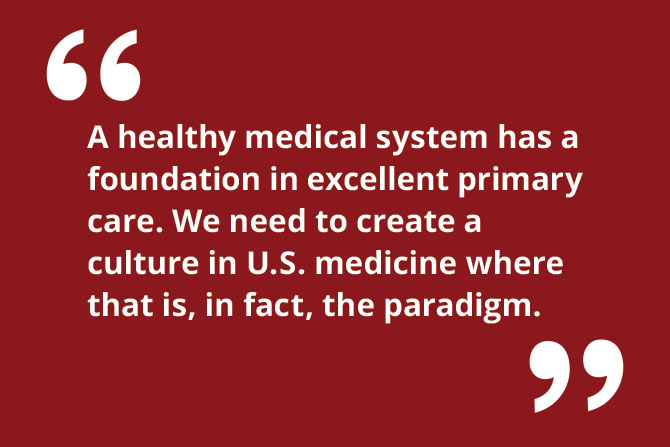
Something we are concerned about at UAFP is the shortage of family physicians in Utah and in many other areas in the U.S. We know that one of the problems is lack of residency programs and not enough spots in those that exist. Do you have any thoughts on what Utah and the U.S. should be doing to encourage more students to go into family medicine?
A healthy medical system has a foundation in excellent primary care. We need to create a culture in U.S. medicine where that is, in fact, the paradigm. To encourage more students to go into family medicine, we need to model for them what successful family medicine looks like. That modeling means we need to be supported and celebrated within medicine. One of the ways we could be better supported is through an exploration of alternative payment models, allowing us to take more time with our sicker patients. We could also use more support with documentation, either by increasing our training and tools for efficient electronic medical record use or, in some cases, considering hiring scribes. Being a generalist is one of the hardest specialties. You need to have comprehensive knowledge, insight into your limitations, and tailored communication skills. This breadth of knowledge can be intimidating for students. For more exposure, I think medical students need to spend the majority of their MS3 rotations in generalist fields, such as family medicine, rural medicine, pediatrics, internal medicine, emergency medicine and general surgery. You should not be an accredited medical school if you are not able to offer these generalist rotations.
Where do you hope to practice once you have completed your
fellowship?
I could not be happier to be in Utah for my residency and fellowship, but afterward, I’m looking to head back to Oregon to be closer to family. In addition to the sunshine, I’m hoping to bring back skills as a clinician-educator, teaching medical students and residents about primary care and geriatrics.
By UAFP
This story appears in Issue 1 2020 of the UAFP Journal.

